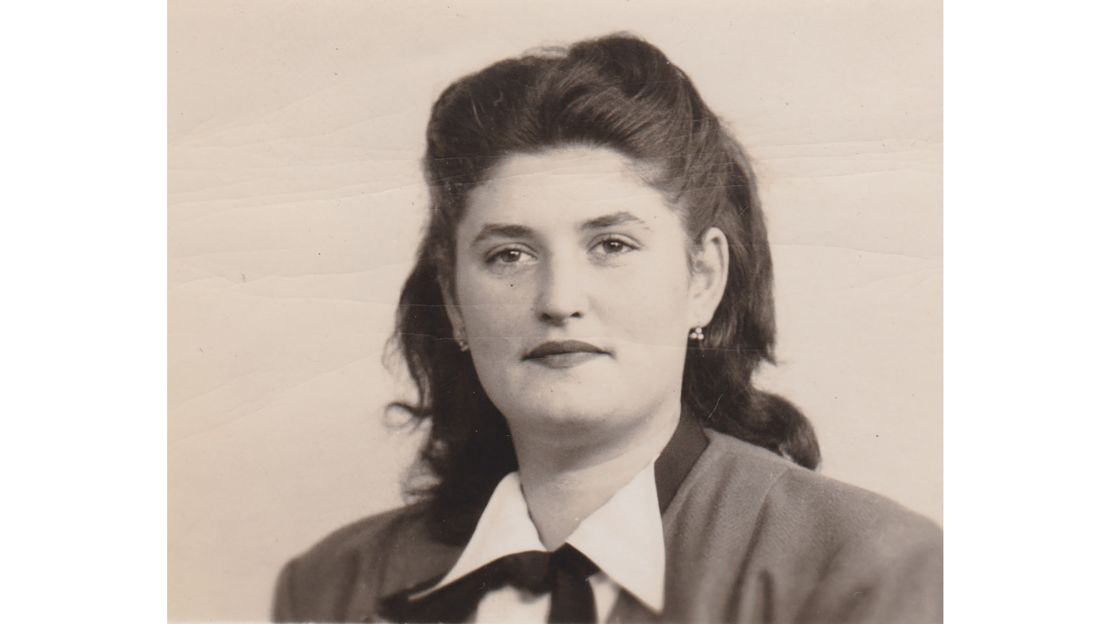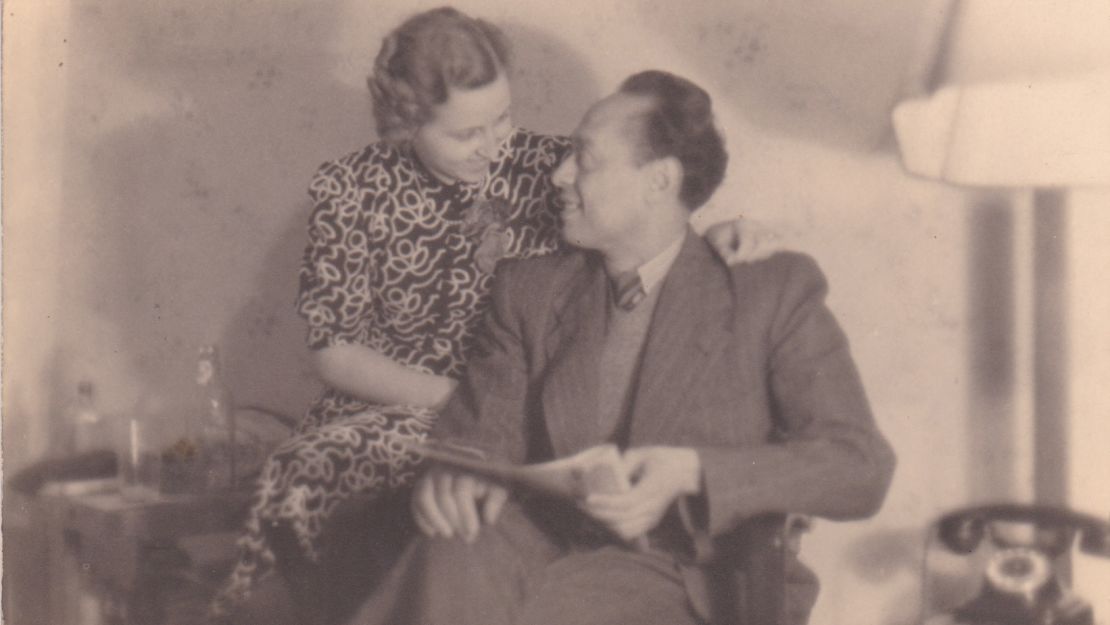A Holocaust memorial exhibition billed as the first of its kind has opened in the United Arab Emirates.
“It reminds us that the unprecedented character of the Holocaust will always hold universal meaning.” Kathrin Meyer, secretary general of the International Holocaust Remembrance Alliance, told CNN.
“As we witness the generation of Holocaust survivors sadly pass, memorials and museums become all the more important in ensuring that this horrific event is never forgotten.”
The “We Remember” exhibition at the Crossroads of Civilizations Museum in Dubai showcases first-hand testimonies of Holocaust survivors and opened to the public last month.
Rabbi Elie Abadie, senior rabbi at the Jewish Council of the Emirates, says this new permanent exhibition is hugely significant as nothing similar has ever been staged in the region.
“Although most people in the Middle East know the Holocaust took place, they do not speak or learn about it as much. Now, the region is opening up, and this exhibition gives tribute to what has happened and demonstrates the public recognition of history.”
He says the Holocaust also took place at a smaller scale in Middle Eastern countries in the 1940s, where Arab Jews in Libya, Tunisia and Iraq were persecuted because of Nazi-inspired teachings.
He says Hitler’s ideologies reached beyond Europe, and that it was important for those who live or travel to this region to be aware of that.
‘Journey through history’
The museum showcases art produced by different civilizations and cultures over several centuries. It’s only fitting, then, that it should host this new display, the curators say.
The mission is to educate and raise awareness about the Holocaust among Dubai’s over 200 different nationalities.
The one-room exhibition, which sits alongside the museum’s six other galleries, takes you through the events leading up to, during, and after the Holocaust, through the eyes of people who lived it.
The Nazis killed more than six million Jews during the Holocaust, along with millions of others including disabled and LGBT people, political dissidents, and religious and ethnic minorities.
Ahmed Obaid Almansoori, an Emirati who founded the private museum, says the timing to open a Holocaust exhibition in the region felt right.
“The Holocaust was a crime against humanity. And when you have an event like that, you must separate it from other events. A museum is not a political place, it’s a journey through history.”
Yael Grafy, one of the exhibition’s curators, says she was thrilled to be able to educate people from all over the world about these events.
“This is like a dictionary of the Holocaust. You learn things you wanted to know about the Holocaust, but you never dared to ask, such as ‘What is a death camp?,’ ‘Did the Nazis plan to murder Jews from the beginning of the regime?,’ and ‘What does Final Solution mean?’”
In a speech at the official opening of the exhibition last week, Peter Fischer, Germany’s Ambassador to the UAE, said the Holocaust is “an eternal mark of shame on my country,” and that is why he is so pleased to see the exhibition.
“I congratulate the UAE for its policy of tolerance. The way of intolerance is not the right way. It will lead to great suffering, even to catastrophe. Take it from a German.”
‘Every kid had a story’

The official opening of the exhibition was meant to happen on April 8, marking the 80th Holocaust Remembrance Day, but Covid-19 restrictions meant the ambassador and other attendees couldn’t travel to attend the event, and so it was postponed.
At the center of the exhibition is a life-sized image of a young boy from one of the best-known photographs of the Holocaust, “Warsaw Ghetto boy.” His image is surrounded by real World War II-era weapons from the museum’s collection, aimed at generating discomfort to draw attention to the magnitude of the catastrophic event, the curators say.
“1.5 million kids died in the Holocaust during World War II,” says Grafy. “We are trying to show that every kid had a story.”
Also featured are extracts from Anne Frank’s diary – which became one of the most famous testimonies of the Holocaust.
A section of the exhibition is devoted to Arabs and Muslims who helped save Jews during the Holocaust. It highlights the rich history of and coexistence between Arabs, Muslims, Christians and Jews in the 20th century.
“When people talk about the Holocaust and the Arab world, there are a lot of different interpretations,” Almansoori says. “We have so many good stories about Arabs and Muslims helping Jews over time, and that’s the positive side people don’t know about that we want to educate them on.”
Hundreds of Jews sought refuge in Albania in 1943 and were welcomed by the majority-Muslim population. The exhibition pays homage to one of Albania’s most sacred cultural traditions, referred to as “Besa” (“word of honor.” ) It places emphasis on protecting people in times of need, irrespective of where they come from.
“Albania is the only country (where) the number of Jewish people was actually going up after the Holocaust.” Grafy says.
‘My duty to mankind’

Another story highlights the valor during World War II of Selahattin Ulkumen, Consul General of Turkey on the German-conquered Greek island of Rhodes.
In 1944, there was a small community of about 1,700 Jews living on the island, some of them Turkish, who were at risk of being killed. According to the exhibition, Ulkumen managed to save more than 42 Jews but paid a heavy price as a result. The Germans bombed his house, resulting in the death of his pregnant wife.
When asked why he did what he did, he replied, “all I did was fulfill my duty to mankind.”
The most special story, however, according to Grafy, is that of Mohamed Helmy, an Egyptian doctor who was studying in Berlin, and saved several Jews from persecution. One of them was a young girl named Anna Boros, who he eventually adopted.
He was the first Arab to be recognized as “Righteous Among The Nations” by Yad Vashem, Israel’s official Holocaust memorial.
At the end of the exhibition’s section, there is a verse from the Quran written in Arabic and translated in English: “Whoever saves one life, saves the whole entire world.”
Grafy says that saying exists in Jewish culture and is said in Hebrew.
“It means if every person did something good, they can bring light and hope to the world,” she saysThis story has been amended to reflect the fact that it is the first Holocaust exhibition to be staged in the Arab world.
Correction: An earlier version of this story included a headline that overstated the region for which this was the first Holocaust exhibition to be staged.
















